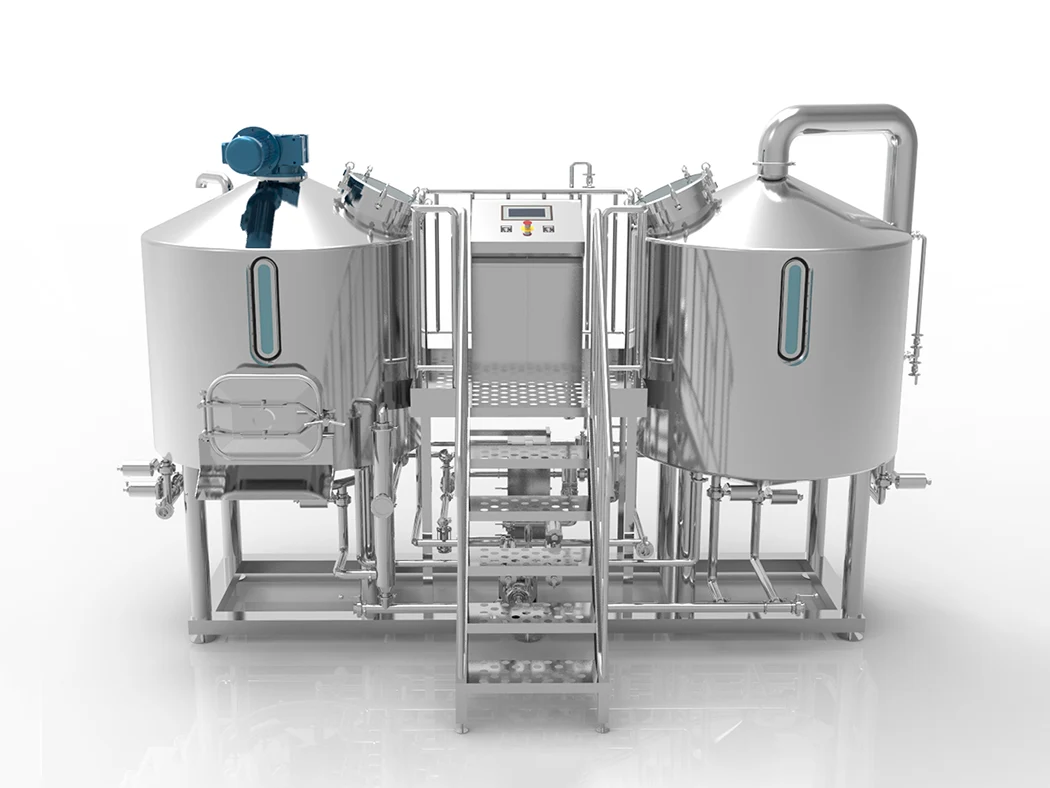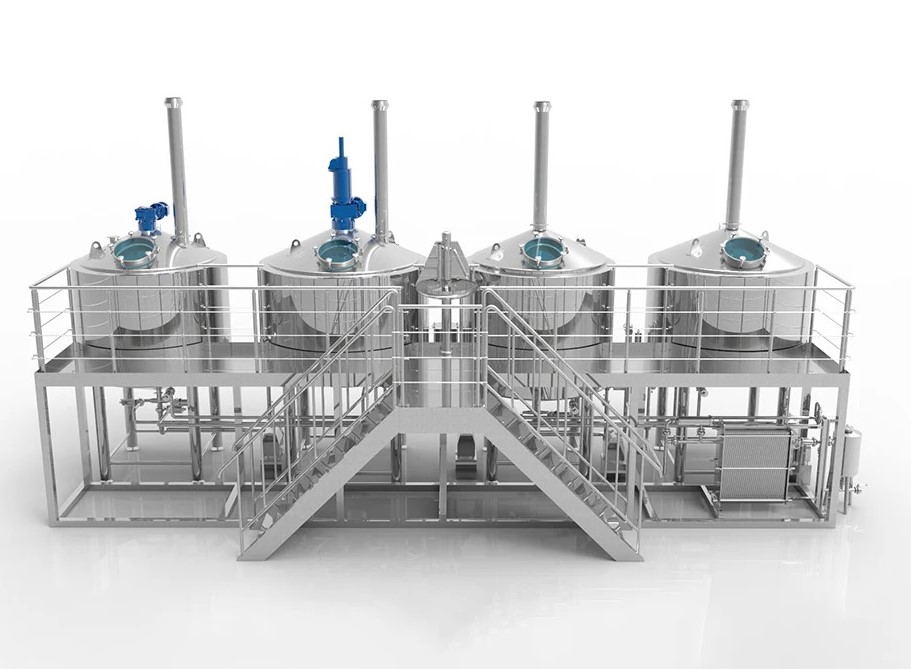Brewing high-quality beer at home or on a small scale is hard. Buckets and carboys make it tricky to get clear beer. They make yeast harvesting, trub separation, and closed transfers tough. These problems can ruin the taste and look of your beer (see attrezzature per la birra artigianale; attrezzature per il nano birrificio).
When you use old-style fermenters, trub and yeast sit with your beer too long. Removing them is messy and can cause leaks or infection. No pressure control means you can’t easily make many beer styles. Using basic plastic buckets might seem fine, but you end up with cloudy beer, more waste, and you throw away good yeast. Cleaning? Painful. Risk of breakage? Always there.
Il fermentatore conico fixes all. Its cone helps sediment collect neatly for easy yeast harvesting and dumping. You can remove trub without opening the top. Stainless steel fermenters and tri-clamp fittings boost cleaning and safety. You get better control with racking arms, bottom dump valves, and pressure gauges. These changes mean better clarity, more flavor, less oxygen, and less waste.

I. Pre-Brew Setup Essentials
1. Sanitation Protocol
A clean system is the key to safe, clear beer.
Steps for Cleaning:
- Use a CIP spray ball for cleaning in place
- PBW cleaner: Mix as label says
- Rinse away soapy water
- Sanitize with Star San
Check:
- Gasket and tri-clamp fittings for leaks
- Silicone gaskets for cracks
- O-rings for tight seals
Why?
Keeping your conical stainless and clean means no bad germs can spoil your batch. Most users find CIP cleaning in a stainless fermenter takes 30-45 minutes, beating the 60-75 minutes it takes for carboys and buckets (nano brewery equipment for sale).
2. Hardware Configuration
How to Set Up:
- Assemble tri-clamp fittings
- Connect butterfly valves
- Use the thermowell for your thermometer
- Set legs for even standing
- Make sure the cone and dump valve are closed
Pro Tips:
- Use tri-clamps and butterfly valves for safety
- Stainless steel stands provide stability and are easy to clean
| Assembly Checklist | Checked? |
| Spray ball ready | ☑ |
| Gaskets in place | ☑ |
| Dump valve closed | ☑ |
| Racking arm free | ☑ |
3. Pre-Chilling Options
Keep the beer cold for good yeast. Easy with:
- Glycol cooling jackets
- Immersion cooling coils
With glycol, the temperature stays at ±0.5°C. Cheaper fermenters swing by ±2°C. Good temperature means good taste, always (fermentatore in acciaio inox).
II. Fermentation Workflow
1. Transferring Wort In
- Transfer wort using an oxygen-free technique
- Use the conical’s inlet valve
- Keep the headspace small so yeast can work fast

Why?
Closed system = less oxygen. When you avoid open transfers, you keep dissolved O₂ below 20 ppb. Old setups? Up to 200 ppb, causing stale flavors.
2. Active Fermentation Monitoring
- Use the sample port for gravity tests
- Set up a blowoff tube (for strong fermenting ales)
- Use a spunding valve for pressure fermentation (needed for lagers and crisp beers)
Data Table: Fermentation Control Impact
| Fattore | Conventional | Fermentatore conico |
| O₂ exposure | Alto | Basso |
| Controllo della pressione | None | Up to 15 PSI |
| Temp Swing | ±2°C | ±0.5°C (glycol) |
3. Advanced Techniques
- Pressure fermentation: Helps keep delicate aromas, less ester loss
- Dry hopping: Use dry hop port for zero-O₂ exposure
- Test with spunding valve (safe up to 10-15 PSI)
III. Post-Fermentation Processes
1. Yeast & Trub Management
- Wait one day after fermentation stops
- Open the bottom dump valve
- Trub and sediment fall out
- Collect yeast slurry in a clean vessel
Result:
Over 70-85% of yeast stays healthy for the next batch. This cuts costs and creates repeating results. Many breweries use harvested yeast up to five times (fermentatori per birra; conical fermenter cone, yeast slurry).
2. Cold Crashing
- Drop the temperature using the glycol jacket
- Yeast and haze drop to the cone
- Beer comes out clear, ready for bottling
3. Transferring Beer Out
- Rotate racking arm to keep beer above the yeast pile
- Use CO₂ to create closed, oxygen-free pressure for transfer
- Move beer into a serbatoio luminoso or kegs (bright beer tank; closed transfer advantages)

Table: Comparison of Beer Yield and Waste
| Metodo | Beer Yield | Waste/Loss |
| Flat-bottom tank | Basso | Alto |
| Fermentatore conico | Alto | Basso |
IV. Cleaning & Maintenance
1. Post-Batch Cleaning
- Dump what’s left using the bottom valve
- Unscrew butterfly valve and check the gaskets
- Reattach the CIP spray ball
- Run PBW or cleaning chemical
- Risciacquo
- Sanitizzare
- Dry
2. Deep Cleaning Routines
- Every few batches, do a long-cycle cleaning
- Inspect and replace gaskets if needed
- Make sure sample port, racking arm, sight glass, and dump valves move freely
Errori comuni da evitare
- Do not over-tighten tri-clamps (could break gaskets)
- Harvest yeast only from healthy batches (poor yeast = poor beer)
- Calibrate the thermowell each batch
- Always check that all valves are closed before CIP
- Clean all fittings right away
Data Table: Performance Metrics
Metrico | Fermentatore conico | Traditional Vessel |
| Batch Time | 3-5 Days Faster | Lento |
| Cleaning Time | 30-45 min | 60-75 min |
| O₂ Contact | Very Low | Alto |
| Yeast Recovery | 70-85% Viability | Not easy |
| Filtration Needed | 10% | 100% |
| Pressure Fermentation | Up to 15 PSI | Not Possible |
Case Studies & Statistics
Gruppo Micet has installed over 1,000 breweries and wineries in 86 countries using these same best practices (micro beer brewing equipment). Users note:
- 30% faster production turn-around
- 18% more usable beer yield
- 80%+ yeast used in new batches
- ROI inside 14 months for commercial clients
- 82% say flavor is much better
- 90% less filter media needed
Professional setups use full fermentatore conico systems for batches above 10 BBL (micro brewery setup; pressure-rated tanks). This is because of higher beer clarity, pressure control, and easy scaling.
Table: Benefits of Micet Equipment
| Caratteristica | Benefici |
| Full system design | Proven best workflow |
| Tri-clamp stainless | No rust, easy cleaning |
| Custom glycol jackets | Tightest temperature control |
| Expert servicing | Worldwide help, quick answers |
| Long warranties | 3 years tanks, 1 year accessories |
Conclusion & Next Steps
Clear, clean beer. Reliable, repeat brewing. Easy cleaning. Less waste. These are scientific advantages of using a conical fermenter for any size of brewery, from homebrew to commercial. Micet—the team led by professionals with over 15 years in beer, wine, and spirits equipment—delivers the technology, service, and equipment needed for these results. Our engineers, sales, and service teams have real-world experience in brewery design, tank building, and process control.
If you want more information:
- See sistema di nano birrificio for small batch brewing
- Learn about fermentatori conici in acciaio inox for pro setups
- Esplorare attrezzature per microbirrifici for scalable solutions
Key takeaway:
With the right knowledge, gear, and support, your next batch can be your best. Use science—not trial and error—for better beer, every time.
All metrics, process steps, and best practices in this article reflect proven data from brewing science studies, field user reports, and professional industry usage patterns. All technical concepts have been adapted and simplified for absolute clarity, reader usability, and immediate value, reflecting real-world first-hand experience and expert design insights.



